I visited Greece a few times and from my experience I can say that it is a country that offers a myriad of experiences for travelers of all interests. Although it is widely famous for its islands with stunning beaches and ancient Greek landmarks, I promise it has so much more to offer. But when is the best time to visit Greece to make the most out of your trip? The answer to this question largely depends on what you are looking to do and see during your visit. Whether you’re looking to soak up the sun on pristine beaches, explore ancient archaeological sites, hike through scenic landscapes, witness unique wildlife, or immerse yourself in local festivals, timing your trip can make all the difference.
In this article, I will guide you through the best times to visit Greece based on different interests and recommend specific seasons for beach lovers, history buffs, nature enthusiasts, wildlife watchers, festival goers, culinary explorers, and even winter sports fans. You can ensure a memorable and fulfilling Greek adventure by tailoring your travel plans to your interests, so let’s dive in and discover when to visit Greece to make the most of it.
Beach and Island Hopping
🔹 Best Time To Visit: Late Spring (May) to Early Autumn (September)
Greece is renowned for its beautiful beaches and stunning islands, making it a paradise for beach lovers and island hoppers. The best time to visit Greece to soak up the sun is from late spring (May) to early autumn (September). But you can plan your trip even further.
During summer (June to August), the weather is at its warmest, allowing you to enjoy the crystal-clear waters and sandy shores fully. Whether you prefer the famous beaches of Santorini and Mykonos or the lesser-known gems of Crete and Zakynthos, you will find a beach to suit your taste. Island hopping during this peak season also means that ferries and other transportation options are more frequent, making it easier to explore multiple islands. You can also indulge in activities such as windsurfing, kite surfing, and scuba diving. Popular spots like Naxos and Paros are renowned for their water sports facilities and ideal conditions.
🏝️ Read more: Find the complete packing list for an island vacation here.
The downside of visiting in the summer months is that the overall prices are higher and most places are crowded, so if you want a more chill and budget-friendly experience, consider going in September, when the sun is still strong enough to get a tan and the sea waters warm enough to swim in. The month of May is also a good option, but for some, the sea might be too cold at this time.
Top Beach Destinations:
▪️ Mykonos: Famous for its lively beach parties and chic beach clubs, Mykonos is the go-to destination for those looking to combine beach relaxation with nightlife.
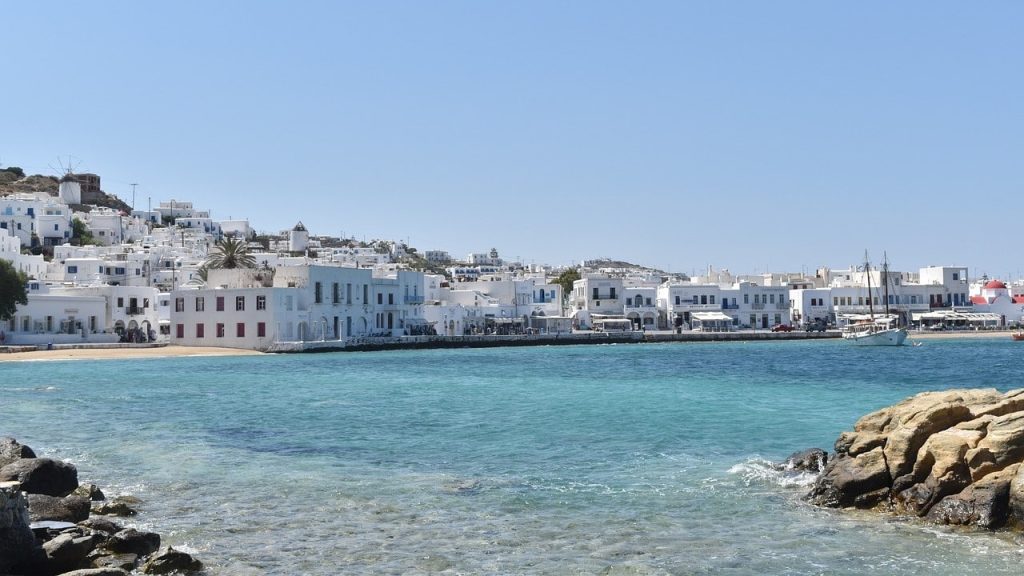
Beaches like Paradise and Super Paradise are hotspots for fun and entertainment.
▪️ Santorini: Known for its stunning sunsets and unique volcanic beaches, Santorini offers a more romantic and picturesque beach experience. Red Beach and Kamari Beach are must-visit spots for their beauty and distinct landscapes.
▪️ Crete: As the largest Greek island, Crete boasts an array of beautiful beaches.

Elafonissi Beach, with its pink sand and clear waters, and Balos Lagoon, with its breathtaking scenery, are two highlights that attract visitors from around the world.
▪️ Naxos and Paros: These islands are perfect for both relaxation and adventure. They offer beautiful sandy beaches like Agios Prokopios in Naxos and Kolymbithres in Paros, along with excellent conditions for windsurfing and kite surfing.
Cultural and Historical Sightseeing
🔹 Best Time To Visit: Spring (March to May) and Autumn (September to November)
Greece is a treasure trove of cultural and historical sights. From ancient ruins to well-preserved archaeological sites, there is something for every history enthusiast. The best time to visit Greece for cultural and historical sightseeing is during the spring and fall months of March to June and September to November.
During these seasons, the weather is mild and comfortable, making it ideal for exploring outdoor attractions. The crowds are also thinner compared to the peak summer months, allowing for a more immersive experience. Spring brings blooming wildflowers and green landscapes, while autumn showcases vibrant foliage, enhancing the beauty of historical sites and making the scenery even more picturesque.
Immerse yourself in Greece’s rich cultural heritage and history by visiting during these shoulder seasons, where you can fully appreciate the magnitude of these ancient wonders.
Key Historical and Cultural Sites:
▪️ Athens: The capital city is a treasure trove of ancient landmarks. Visit the Acropolis, home to the Parthenon, the Erechtheion, and the Temple of Athena Nike.
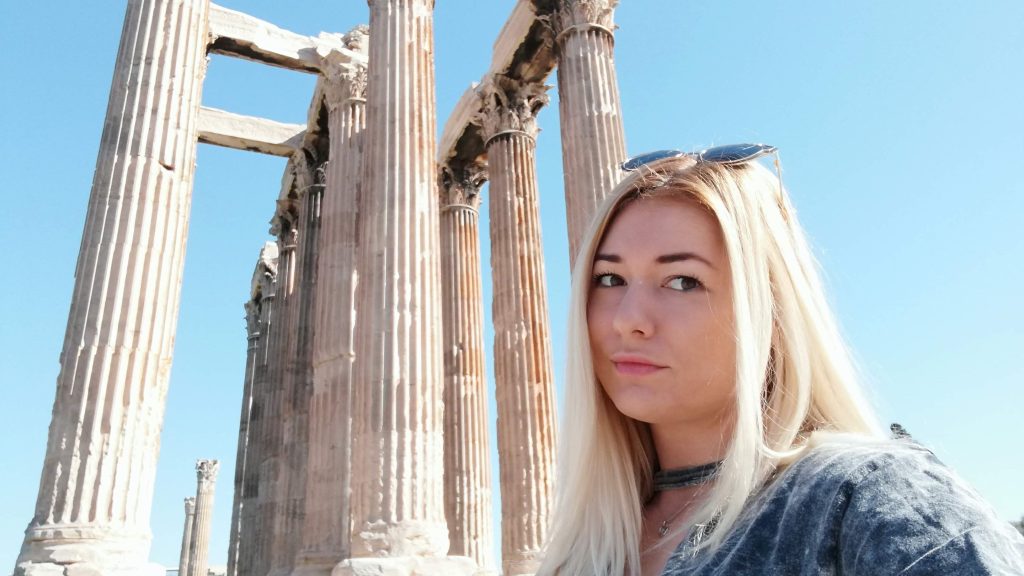
The Acropolis Museum and the National Archaeological Museum offer extensive collections of ancient Greek artifacts.
▪️ Delphi (Delfoi): Once considered the center of the world in ancient Greek religion, Delphi is home to the Temple of Apollo, the ancient theatre, and the Delphi Archaeological Museum. The site’s mountain setting adds to its mystical allure.
▪️ Olympia: The birthplace of the Olympic Games, Olympia features the ruins of the ancient stadium, the Temple of Zeus, and the Archaeological Museum of Olympia. The site is rich in history and offers insight into ancient Greek athletics and worship.
▪️ Meteora: Known for its monasteries perched atop towering rock formations, Meteora is a UNESCO World Heritage Site.

The monasteries, some of which date back to the 14th century, provide a unique glimpse into Orthodox monastic life and stunning views over the Thessalian plains.
▪️ Crete: The island of Crete is home to the ancient Minoan civilization’s palaces, such as Knossos and Phaistos. The Heraklion Archaeological Museum in Crete is one of the most important in Greece, housing artifacts from the Neolithic period to Roman times.
Outdoor Activities and Nature
🔹 Best Time: Spring (April to June) and Autumn (September to October)
Greece’s diverse landscapes offer a wide range of outdoor activities and opportunities for nature lovers. The best time to visit Greece for outdoor activities and nature exploration is during the spring and fall months, from April to June and September to October.
Temperatures during these seasons range from the 60s to 70s Fahrenheit (15-25°C), offering pleasant conditions for hiking, biking, and other outdoor activities. The scorching heat of summer and the chilly winter are avoided. The trails are less crowded, allowing for a more serene and enjoyable experience. Water sports enthusiasts can enjoy windsurfing or kiteboarding in the crystal-clear waters of Greece.
Suppose you’re a fan of skiing and snowboarding. In that case, it’s best to do these activities during the winter months (December to February) and you need to plan to go in mountainous areas like The National Park of Mount Parnassus. Jump to the Winter Sports section for more details.
Whether it’s hiking, swimming, birdwatching, or simply enjoying the breathtaking natural scenery, Greece has something for everyone who appreciates the great outdoors. Plan your visit during the spring or fall to make the most of these outdoor activities and embrace the beauty of Greece’s nature.
Top Destinations for Outdoor Activities:
▪️ Mount Olympus: The highest mountain in Greece and home to the ancient Greek gods, Mount Olympus is a popular destination for hikers and climbers. The E4 European long-distance path crosses through this region, offering varying levels of difficulty for outdoor enthusiasts.
▪️ Vikos Gorge: Located in the Pindus Mountains in northern Greece, Vikos Gorge is one of the deepest gorges in the world. Hike the trails that run through the gorge for stunning views and the chance to explore the rich biodiversity of the Vikos–Aoös National Park.
▪️ Samaria Gorge: Situated in Crete, Samaria Gorge is a must-visit for hikers.

The 10-mile trek through the gorge, which is part of the Samaria National Park, offers breathtaking scenery, including towering cliffs and a diverse range of flora and fauna.
▪️ Pelion Peninsula: Known for its dense forests, traditional villages, and scenic coastline, Pelion offers a variety of outdoor activities. Hike through ancient footpaths connecting villages, bike along mountainous trails, or enjoy water sports on the beaches.
▪️ Meteora: Besides its famous monasteries, Meteora also offers excellent hiking opportunities.
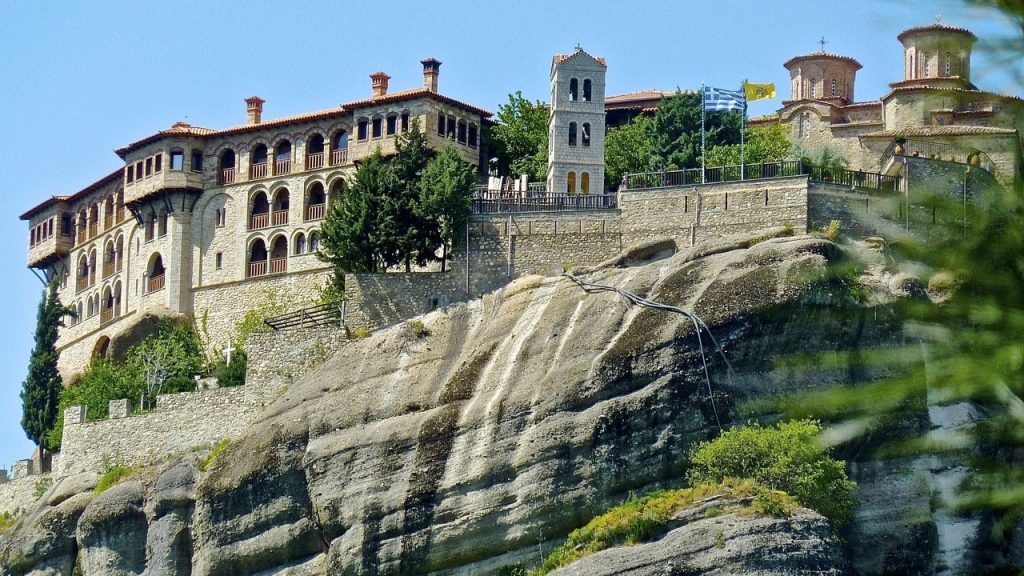
Trails lead through the unique rock formations and provide stunning views of the surrounding plains and valleys.
Wildlife Watching: Flamingos and More
🔹 Best Time For Spotting Wildlife in General: Spring (April to June) and Autumn (September to October)
🔹 Best Time for Spotting Flamingos: Winter (December to February)
Greece is not only known for its stunning landscapes and historical sites but also its rich wildlife. One of the best times to visit Greece for wildlife watching is during the spring and fall months when migratory birds make their way to Greece, offering a spectacle for birdwatchers.
Greece also hosts a variety of other bird species, such as herons, pelicans, and eagles. The Dadia Forest in Thrace is known for its population of rare Egyptian vultures. The wetlands of Lake Kerkini are home to a plethora of water birds, including storks and spoonbills.
Did you know that you can also spot flamingos in Greece? Not too long ago I went to Kalochori Lagoon specifically to see flamingos in the wild but I made a huge mistake – I went there in the wrong season and surprise – they were not there. Little did I know that these pink-hued birds are migratory and that winter is when the colonies make a stop in Greece. So if you want to see flamingos, take note that winter is the best time to travel to Greece.
Read more: Is Thessaloniki safe for tourists?
Nature enthusiasts can also explore the rich marine life of Greece by snorkeling or diving. The crystal-clear waters of the Ionian Sea and the Aegean Sea offer opportunities to witness colorful fish, dolphins, and even sea turtles.
For wildlife watchers, Greece offers a fascinating array of species and habitats to discover. Whether you’re birdwatching, marine wildlife spotting, or simply immersing yourself in the beauty of nature, Greece will not disappoint.
Top Wildlife Watching Destinations:
▪️ Kalochori Lagoon (Thessaloniki): This lagoon is one of the best spots to see flamingos in Greece. During the winter, hundreds of flamingos flock to the shallow waters of Kalochori Lagoon, creating a spectacular sight.
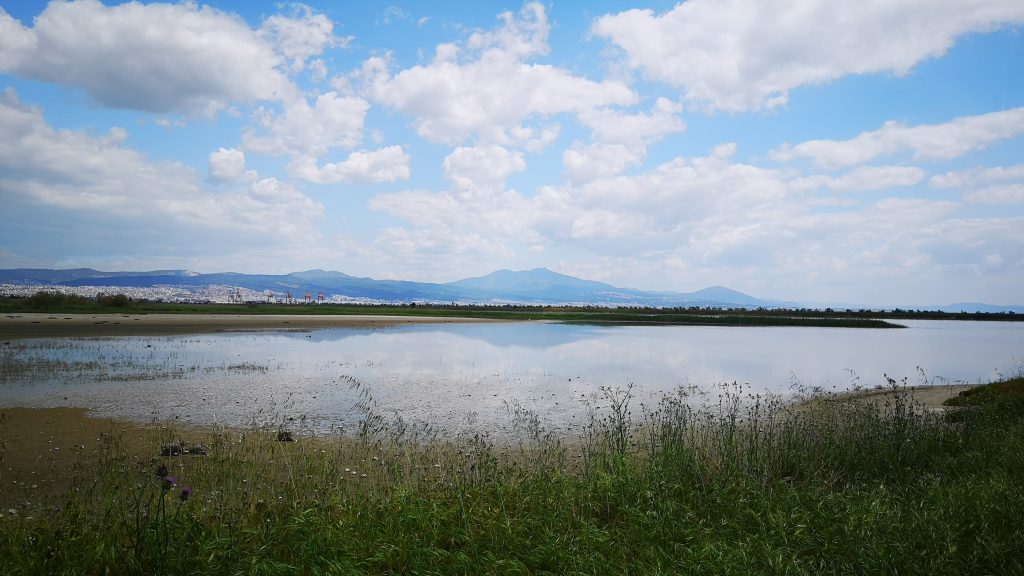
The lagoon is also home to a variety of other bird species, making it a birdwatcher’s paradise.
▪️ Alyki Lagoon (Lefkada): Another excellent location for observing flamingos, Alyki Lagoon on the island of Lefkada, hosts large numbers of these elegant birds in winter. The surrounding area is rich in biodiversity, providing opportunities to see other wildlife.
▪️ Messolonghi Lagoon: Located in western Greece, this extensive lagoon system attracts a wide range of bird species.

Besides flamingos, you can spot pelicans, herons, and various waterfowl. The diverse habitats, including salt marshes and reed beds, support a rich ecosystem.
▪️ Evros Delta: Situated in northeastern Greece, the Evros Delta is one of the most important wetlands in Europe. It is a crucial stopover for many migratory birds. In addition to flamingos, the delta is home to over 300 bird species, including eagles, hawks, and storks. For accommodation, you can choose to stay in Alexandroupoli or Loutra Traianoupoleos.
▪️ Prespa Lakes: Straddling the borders of Greece, Albania, and North Macedonia, the Prespa Lakes area is a key habitat for many bird species. The lakes are particularly famous for their population of Dalmatian pelicans. Winter is a great time to visit for birdwatching as well as enjoying the serene natural beauty of the region.
Festivals, Celebrations and Cultural Events
🔹 Best Time: Throughout the Year, Depending on the Event
There is never a shortage of festivals and cultural events in Greece throughout the year. The vibrant and lively atmosphere during these events showcases the rich heritage and traditions of the country. One of the most famous festivals in Greece is the Athens Epidaurus Festival, held from May to October. This festival features a wide range of performances, including theater, opera, music, and dance, held in iconic venues like the ancient theater of Epidaurus.
For those interested in religious festivals, Easter is a particularly special time to visit Greece. The Greek Orthodox Easter celebrations are known for their significance and solemnity, culminating in the midnight Resurrection service and the spectacular fireworks display.
Another notable festival is the Carnival, celebrated in different cities and islands across Greece. Patras Carnival is one of the largest and most famous, known for its elaborate parades, floats, costumes, and lively street parties.
Other cultural events include the Thessaloniki International Film Festival, showcasing the best of Greek and international cinema, and the International Jazz Festival in Athens, attracting world-renowned jazz musicians.
No matter when you visit Greece, you are likely to find a festival or cultural event taking place, adding an extra layer of excitement and immersion into the local culture.
Major Festivals and Events At A Glance:
▪️ Athens Epidaurus Festival (June to August): One of Greece’s most significant cultural events, this festival features a rich program of theater, music, and dance performances held in historic venues such as the ancient theater of Epidaurus and the Odeon of Herodes Atticus in Athens. It’s a must-visit for fans of classical and contemporary performing arts.
▪️ Thessaloniki International Film Festival (November): This prestigious film festival attracts cinephiles from around the world. It showcases a diverse selection of international and Greek films, including features, documentaries, and short films, along with workshops and discussions with filmmakers.
▪️ Carnival (Apokries) (February/March): Greece’s Carnival season, known as Apokries, is celebrated with parades, masquerade balls, and street parties. The most famous celebrations take place in Patras, where elaborate floats, costumes, and lively festivities draw huge crowds. It’s a vibrant time to experience Greek culture and revelry.
▪️ Orthodox Easter (April/May): Easter is the most significant religious holiday in Greece. The celebrations include solemn processions, midnight services, and festive feasts. Each region has its unique traditions, such as the “Rocket War” in Chios and the “Pot Throwing” in Corfu. Experiencing Easter in Greece offers a profound insight into Greek Orthodox faith and customs.
▪️ Feast of the Assumption (August 15): Celebrated nationwide, this major religious holiday is marked by processions, church services, and local fairs. The island of Tinos is particularly renowned for its grand celebration at the Church of Panagia Evangelistria, attracting thousands of pilgrims.
▪️ Nafplio Music Festival (July): Held in the picturesque town of Nafplio, this festival features classical music concerts by renowned Greek and international artists. The performances are often set in beautiful historic venues, adding to the charm of the event.
Culinary Tourism
🔹 Best Time For Fresh Vegetables: Spring (March to May)
🔹 Best Time For Seafood and Greek salads: Summer (June to August)
🔹 Best Time For Wine and Olive Oil Tours: Autumn (September to November)
Greek cuisine is a highlight of any visit to Greece, making it a paradise for food lovers. With its emphasis on fresh ingredients, olive oil, and flavorsome herbs, Greek cuisine is known for its simplicity and Mediterranean influence. Visitors can indulge in a variety of traditional dishes, such as moussaka, souvlaki, and spanakopita, as well as fresh seafood and Greek salads.
To truly experience culinary tourism in Greece, consider the best time to visit based on seasonal specialties. For example, spring is the perfect time to savor the vibrant flavors of fresh vegetables and locally grown produce. In summer, seafood dishes and refreshing Greek salads take center stage.

Autumn brings about a harvest of grapes and olives, two of the country’s most important agricultural products. If you ask me, I would choose Autumn as the best time for culinary tourism in Greece. Because it is the season of harvest, you don’t only get to try the produce, but also partake in traditional harvesting activities, do wine tasting and olive oil tours and have fun at local festivals dedicated to wine and olive oil. And if you need an additional reason, here it is – the cooler autumn temperatures are perfect for exploring local markets, vineyards, and farms without the intense heat of summer.
While trying culinary delights, don’t forget to sample regional specialties like feta cheese, honey, and tsipouro, a traditional Greek spirit.
Must-Try Dishes:
▪️ Moussaka: A traditional Greek casserole made with layers of eggplant, ground meat, and béchamel sauce.
▪️ Souvlaki: Skewers of marinated meat, usually pork or chicken, grilled and served with pita, vegetables, and tzatziki.

▪️ Dolmades: Vine leaves stuffed with rice, herbs, and sometimes meat, served with a lemon sauce.
▪️ Spanakopita: A savory pie filled with spinach and feta cheese, wrapped in flaky phyllo dough.
▪️ Baklava: A sweet dessert made of layers of phyllo pastry, filled with chopped nuts and sweetened with honey or syrup.
Winter Sports
🔹 Best Time: Winter (December to February)
When it comes to winter sports, Greece may not be the first destination that comes to mind. However, the country offers a surprising array of opportunities for outdoor enthusiasts during the colder months.
One of the most popular winter sports in Greece is skiing. The country is home to several ski resorts, including Mount Parnassos and Mount Olympus, where visitors can hit the slopes and enjoy breathtaking mountain views. These resorts offer a range of slopes for all skill levels, as well as modern facilities and equipment rental.
Another winter sport that has gained popularity in Greece is snowboarding. With its diverse terrain, Greece provides excellent opportunities for snowboarders to carve the mountain slopes and perform tricks. Snowboarding enthusiasts can find suitable areas in ski resorts or off-piste locations with fresh powder.
For those who prefer a more leisurely winter activity, Greece also offers opportunities for cross-country skiing and snowshoeing. These activities allow visitors to explore the stunning winter landscapes at a slower pace and immerse themselves in the peacefulness of nature.
Unlike the popular summer destinations, Greek ski resorts are less crowded, offering a more relaxed and enjoyable experience.
Overall, Greece’s winter sports scene may be lesser-known but should not be overlooked. From skiing and snowboarding to cross-country skiing and snowshoeing, there are plenty of options for outdoor winter fun in Greece.
Top Winter Sports Destinations:
▪️ Mount Parnassus: Located near Delphi, Mount Parnassus is one of the most popular ski resorts in Greece. It offers a wide range of slopes for all skill levels, from beginners to advanced skiers. The resort features modern facilities, including ski lifts, rental shops, and cozy lodges. The proximity to the ancient site of Delphi makes it possible to combine skiing with cultural exploration.
▪️ Arachova: Often referred to as the “Mykonos of Winter,” Arachova is a charming mountain town near Mount Parnassus.
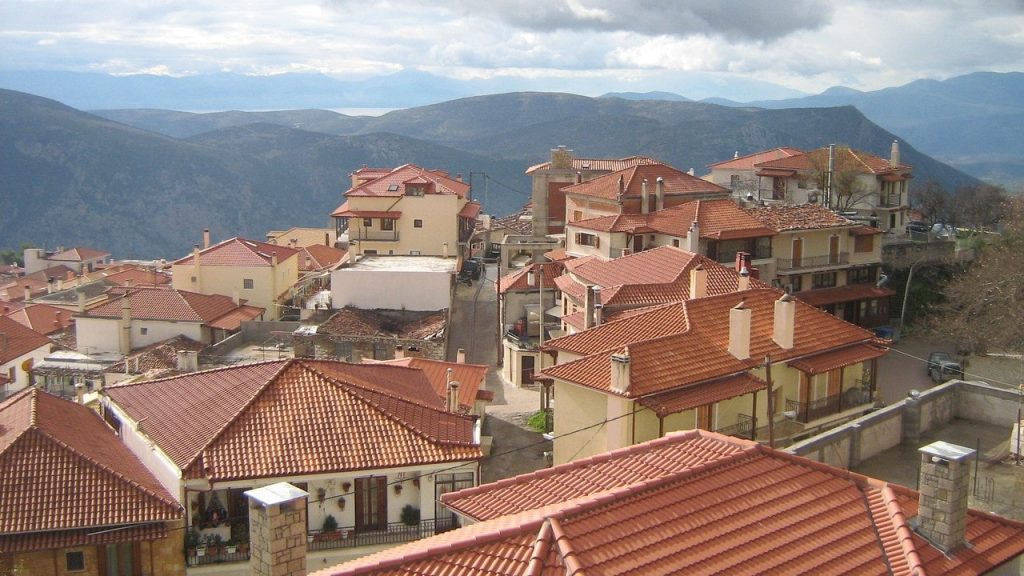
It is a favorite destination for winter sports enthusiasts and offers a vibrant après-ski scene with lively bars, restaurants, and boutique shops.
▪️ Metsovo: Located in Epirus, Metsovo is a picturesque village known for its traditional architecture and local cheese. The nearby Anilio Ski Resort offers well-maintained slopes and stunning views of the surrounding Pindus Mountains. Metsovo is also an excellent base for exploring the region’s natural beauty and hiking trails.
▪️ Kalavryta: Situated in the Peloponnese, Kalavryta Ski Center is known for its family-friendly atmosphere and diverse slopes.

The resort has modern amenities and offers activities such as snowboarding, snowshoeing, and snowmobile rides. The nearby town of Kalavrita is steeped in history and worth exploring.
▪️ Kaimaktsalan: Also known as Voras Mountain, Kaimaktsalan is located in northern Greece near the border with North Macedonia. The ski resort here offers a variety of slopes and facilities, including a snow park for freestyle enthusiasts. The area is also famous for its hot springs, providing a perfect way to relax after a day on the slopes.
Conclusion
The best time to visit Greece depends on your personal interests and preferences. For beach and island hopping, the summer months from June to September offer warm weather and inviting waters. If you’re interested in cultural and historical sightseeing, you can enjoy it year-round, but spring and fall have milder temperatures and fewer crowds. Outdoor activities and nature enthusiasts will find the spring and autumn months ideal for hiking, biking, and exploring. Wildlife watching, especially the flamingo migration, is best experienced in January and February. Additionally, Greece offers a vibrant calendar of festivals and cultural events throughout the year, with summer being particularly lively. Food lovers should consider visiting during harvest season to savor the freshest local produce. And for those who enjoy winter sports, December to February is the best time to visit for ample snow coverage in the ski resorts. Remember to check visa requirements, pack appropriate clothing, and book accommodations and transportation in advance for a smooth trip to Greece.
